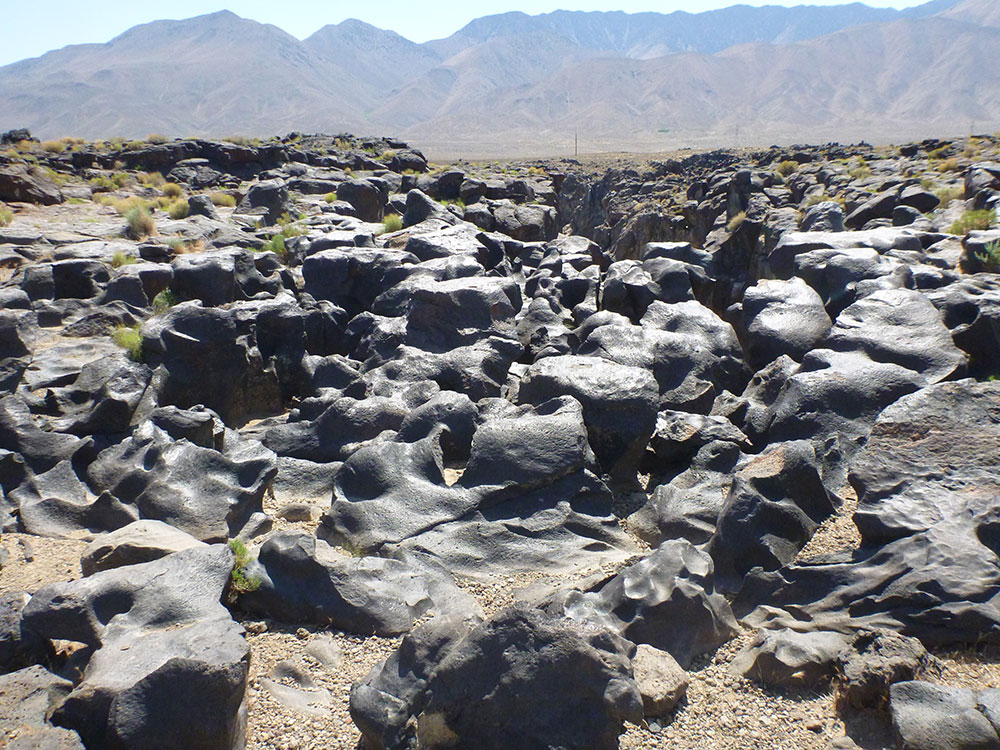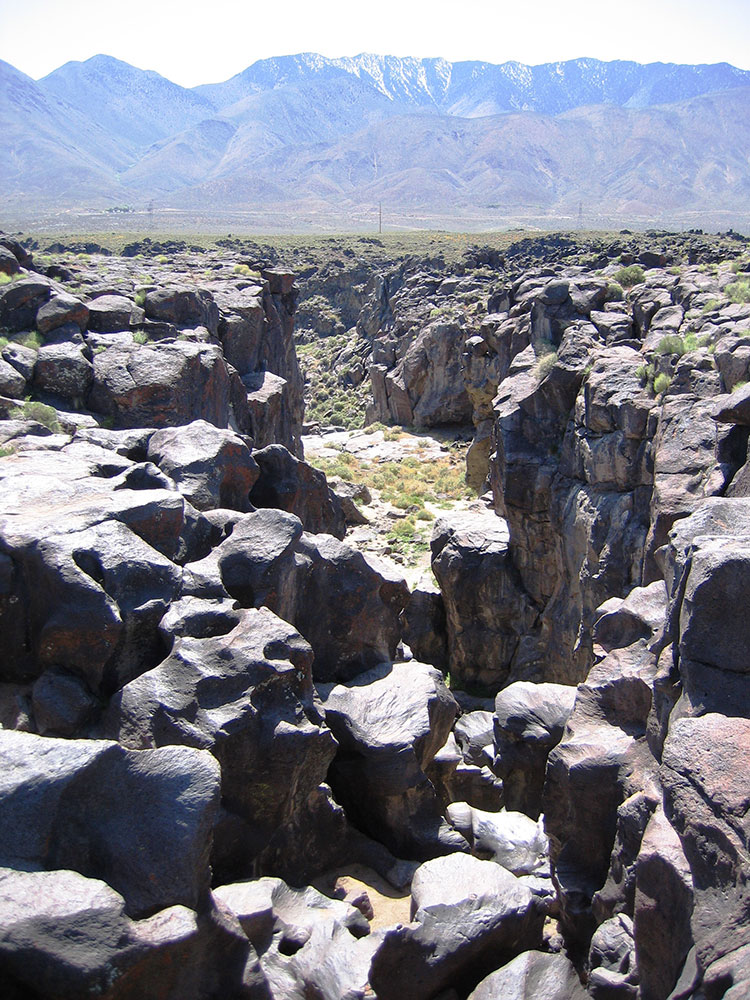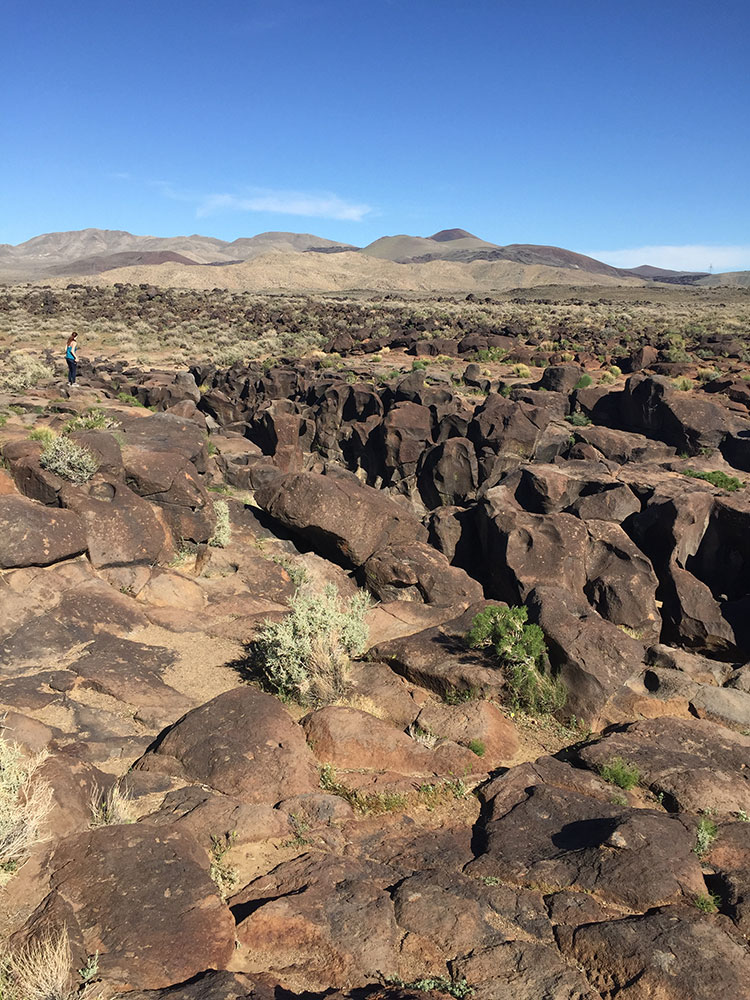Unique geological feature where volcanic activity in the mountain range, along with meltwater from glaciers in the nearby Sierra Nevada, played a role in the creation of the falls
Lone Pine, 46 mi
From Los Angeles (165 mi): Get on US-101 N from W Temple St. Continue to Mojave. Follow CA-14 S and US-395 N to Fossil Falls Access Rd in Inyo County.
From Las Vegas (266 mi): Get on I-515 N/US-95 N from N 4th St and Exit I-15 N. Follow I-15 S and CA-58 W to US-395 N in San Bernardino County. Take exit 206 from CA-58 W. Follow US-395 N to Fossil Falls Access Rd in Inyo County.
Overview
The Fossil Falls is a unique geological feature, located in the Coso Range of California. Volcanic activity in the mountain range, along with meltwater from glaciers in the nearby Sierra Nevada, played a role in the creation of the falls. They are located near the community of Little Lake, 1.0 mi (1.6 km) off US 395 (at a red cinder cone called "Red Hill") on Cinder Road to Red Hill, with signs to Fossil Falls.
 kallahar, CC BY 3.0, via Wikimedia Commons ; Image Size Adjusted
kallahar, CC BY 3.0, via Wikimedia Commons ; Image Size AdjustedGeology
During the last ice age, glaciers formed in the Sierra Nevada. Meltwater from the glaciers pooled into large lakes, including Owens Lake and the Owens River. The river traveled through to Indian Wells Valley, and its course was diverted several times by volcanic activity. The falls were formed when the river was forced to divert its course over a basalt flow, polishing and reshaping the rock into a variety of unique shapes and forms.
All the lava flows at Fossil Falls are basaltic. The Coso Volcanic Field brought flows from the north east and later Red Hill, which can be viewed from Fossil Falls, released the younger lava. The flows occurred between 400,000 years ago and 10,000 years ago. During this period, the glacial flows would run through Fossil Falls and smooth the vesicular basalt. The erosion found at Fossil Falls was formed by the youngest glacial runoff, called the Tioga, from the Sierra Nevada Mountain Range about 20,000 to 10,000 years ago.
In addition to the small gas vesicles in the basalt, there are large, perfectly circular penetrations in the basalt. These are erosional features called potholes. It is speculated that Red Hill cast out granitic detritus which fell into Fossil Falls. Water accelerates as it moves past the rocks. The relatively still water ahead forced the moving water to slow down and rotate to form an eddy. The high velocity currents were enough to catch the granitic rocks from Red Hill and spiral them downwards in multiple vortices, drilling them into the basalt. Sediments would get trapped and continue to circularly erode the holes.
Fossil Falls originally started downstream from where it sits today; it moved upstream as waterfalls typically do. Water falling over the edge of the waterfall undercut the falls and caused them to move upstream and grow taller. This process is called plunge-pool erosion.
This article uses material from the Wikipedia article "Fossil Falls", which is released under the Creative Commons Attribution-Share-Alike License 3.0
 Wvannorden, CC BY-SA 3.0, via Wikimedia Commons; Image Size Adjusted
Wvannorden, CC BY-SA 3.0, via Wikimedia Commons; Image Size Adjusted EmmaBryant, CC BY-SA 4.0, via Wikimedia Commons; Image Size Adjusted
EmmaBryant, CC BY-SA 4.0, via Wikimedia Commons; Image Size Adjusted